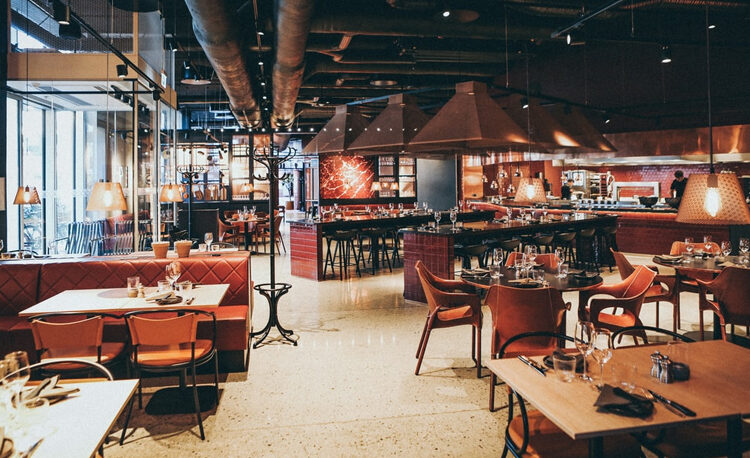According to WRAP (the Waste and Resources Action Programme), the food companies produce 400,000 tonnes of highly unavoidable food waste every year. Furthermore, it’s said that food waste costs the restaurant sector a staggering approximately 690 million every year. If your food stock suppliers and restaurants can understand how to reduce food waste and follow guidelines, you will help protect the environment, but you’ll also save your business money and turnover in the long run. Our Food Hygiene and Safety training is shaped to ensure a comprehensive knowledge and guidelines of all food safety and hygiene procedures.
Following are some of the easy tips that will help you with Food Waste Management in Restaurants;
- Reduce the concept of over-buying stock
You should ensure that you only purchase the stock and ingredients that are useful and sufficient for your business. It can be tempting and encouraging to ‘stock up’ or buy in bulk if your supplier has a good deal or offer on products, but doing so can provide you lot of stock and more food products than you need. And this food will either expire or go to waste if it’s left to spoil in storage.
- Food Storing Correctness
You should ensure that your fridges and freezers are operating at the optimum temperatures, ensure that low-risk foods are always kept on upper shelves than high-risk foods, and keep food storage plates hygienic, clean and tidy. Storing foods under the optimum scenario and conditions is crucial to maintaining their quality and preventing pathogenic bacterial growth, which can seriously lead to food wastage.
- Follow stock rotation regularly
Follow the FIFO rule – First In, First Out When you are storing food and displaying food, you should ensure that newer stock is routinely placed behind an older stock, and the older stock will always be utilized first before it has a chance to be wasted.
- Temperature control
Optimum temperature control guideline is yet another crucial parameter for food safety as it helps reduce the growth of harmful pathogenic bacteria. It also defines that food waste is less likely to be thrown out as the food reduces its chances to spoil. It may include the process of cooling hot food correctly, reheating food to the correct core temperature (at least 70°C for 2 minutes), keeping high-risk food in fridges (1-4°C) and freezers (below -18°C), plus hot/cold management at safe temperatures (above 63°C and below 8°C, respectively).
- Label food properly
If foods are stored in various containers, you must ensure that they are clearly labelled with allergies, date information, and product data with dates. Keeping your stock organized and well-described makes it much easier to keep proper track of what you have and what needs to be used early, preventing unlabelled containers from being shredded away in not being aware of it or because you don’t know what’s in them.
- Pay attention to use-by dates
According to statistics by WRAP, approximately 21% of food restaurant waste is caused due to food spoilage. It’s essential that you have well-planned and proper stock management and stock rotation system to reduce food wastage or go out of date before it can be used. Use-by dates should be monitored at regular time intervals.
- Keep track of portion control
Be aware of the oversized and unnecessary food portions and jumbo side dishes – quality is sure more appreciable and preferable than quantity. A 2012 study and data actually found that more than a quarter of people or consumers leave food at the end of their meal on the table, with chips/French fries stated as the food that is mainly preferred to be left. The primary cause of this food wastage is customers considering fries, vegetables, and salads as an extra part of their main meal that they didn’t even ask for. Be clear about the amount and the dishes you serve to control food wastage.
- Donate leftover food items to a local charity
Set up a close connection with a local charity, and try to donate any leftover meals, food products, and even healthy ingredients to the bunch of people who desperately need them and derive them. You could also set up a link with a local food bank to share your food items in the best possible way. It will ensure that your leftover food is delivered to the best possible home rather than to waste.
- Give your customers more menu options
For example, check if all your main meals need to come with chips or salad? Give customers more choices and options over what to include or leave out of their meal to reduce any food item waste. Perhaps people would love to choose even another item that fries, vegetables, or salad, or maybe even these items may be the best left on the ‘side dishes’ part of the menu for customers to purchase if they actually need them.
- Ask if customers wish to take leftovers home
According to various statistics and reports, it is observed that approximately 34 % of waste is food that is left on customers’ plates, so we should actually prefer to give an offer to your customers and the option of a ‘doggy bag’ to take their leftover food home with them. Of course, not every meal can be packaged up for eating afterward, but slices of pizza can easily be put into a take-away box, for example. So, you can either pack them for the customers or if the leftovers are not in a condition to be packed for the consumers, you can get doggy bag them to reduce the amount of wastage of food.
- Train employees in how to reduce waste
According to the law, every food handler should be compulsorily trained in food safety and hygiene. They should also be given proper assistance and taught deeply about reducing waste. It is also founded that inadequate or poor food preparation contributes up to 45% of food waste and is the most significant contributing factor for any restaurant. Therefore, every staff member needs to learn how to store food properly, cook food deliciously and consciously, clean the kitchen, and avoid cross-contamination.
- Reinvent them
You can also be creative and innovative when it comes to cooking. Leftover vegetables and food items are easily combined or baked into incredible dishes. You can also write “today’s special menu” to use expired products and make them exotic for your customers to try. Reinvent grains and meats into fried rice, hash, scrambles, and soups. It will surely help you to avoid a large number of food wastage.
TAKE AWAY
Following are some tips and tricks to manage and monitor your food and reduce food wastage. Keeping these simple aspects in mind will surely help you save your time, waste and utilize the food most fruitfully. Reach us today to know more about food hygiene, safety, and management.

